-
 Bitcoin
Bitcoin $84,303.0786
0.72% -
 Ethereum
Ethereum $1,824.0570
0.33% -
 Tether USDt
Tether USDt $0.9998
-0.01% -
 XRP
XRP $2.0874
2.05% -
 BNB
BNB $597.8738
-0.33% -
 Solana
Solana $118.8333
0.40% -
 USDC
USDC $1.0000
0.00% -
 Dogecoin
Dogecoin $0.1667
1.66% -
 Cardano
Cardano $0.6588
1.16% -
 TRON
TRON $0.2390
2.38% -
 Toncoin
Toncoin $3.5373
-4.78% -
 UNUS SED LEO
UNUS SED LEO $9.3604
-0.66% -
 Chainlink
Chainlink $13.0744
0.75% -
 Stellar
Stellar $0.2630
0.86% -
 Avalanche
Avalanche $18.5330
0.97% -
 Sui
Sui $2.2611
-1.82% -
 Shiba Inu
Shiba Inu $0.0...01240
0.76% -
 Hedera
Hedera $0.1648
1.17% -
 Polkadot
Polkadot $4.1054
2.64% -
 Litecoin
Litecoin $84.7040
0.39% -
 Bitcoin Cash
Bitcoin Cash $308.6873
0.94% -
 MANTRA
MANTRA $6.3103
-0.69% -
 Bitget Token
Bitget Token $4.5571
-0.22% -
 Dai
Dai $1.0001
0.01% -
 Ethena USDe
Ethena USDe $0.9996
-0.02% -
 Monero
Monero $217.3032
2.54% -
 Hyperliquid
Hyperliquid $11.8474
0.49% -
 Uniswap
Uniswap $5.9987
0.12% -
 Pi
Pi $0.5521
-12.24% -
 NEAR Protocol
NEAR Protocol $2.5537
4.15%
Why are the prices in the NFT secondary market fluctuating so dramatically?
NFT price swings are driven by market sentiment, celebrity endorsements, speculation, and the unique nature of NFTs, leading to high volatility in the secondary market.
Apr 03, 2025 at 10:35 pm
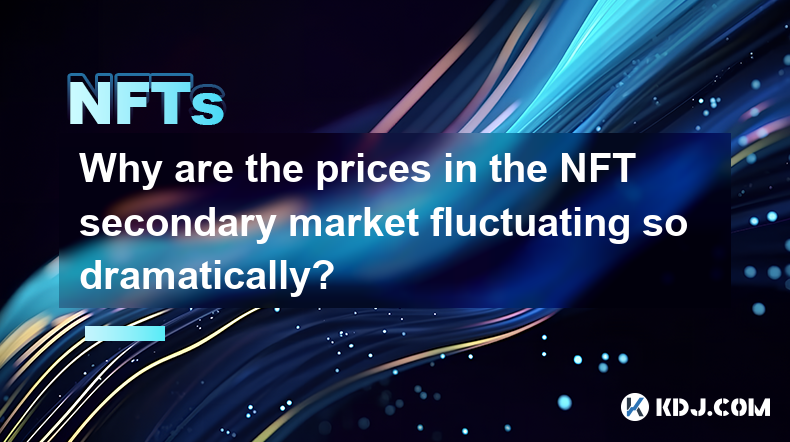
The NFT secondary market has been experiencing dramatic price fluctuations, leaving many in the cryptocurrency community puzzled and curious. To understand this phenomenon, it's essential to delve into the factors driving these price movements. From the impact of market sentiment and celebrity endorsements to the role of speculation and the unique nature of NFTs, several elements contribute to the volatility observed in the NFT secondary market. This article will explore these factors in detail, shedding light on why NFT prices can swing so wildly and what this means for investors and enthusiasts alike.
Market Sentiment and Hype
One of the primary drivers of price fluctuations in the NFT secondary market is market sentiment. The crypto world is highly influenced by emotions and trends, and NFTs are no exception. When a particular NFT project gains popularity, often fueled by social media buzz or celebrity endorsements, the demand for those NFTs can skyrocket. This surge in demand leads to a rapid increase in prices. Conversely, if the hype around a project diminishes, the prices can plummet just as quickly.
For instance, when a well-known artist or celebrity announces their involvement with an NFT project, it can create a frenzy among collectors and investors. This was evident with the Bored Ape Yacht Club (BAYC) NFTs, which saw a significant price increase after celebrities like Justin Bieber and Paris Hilton purchased and showcased them. The hype around such projects can lead to a speculative bubble, where prices are driven up by the fear of missing out (FOMO) rather than the intrinsic value of the NFTs themselves.
Speculation and FOMO
Speculation plays a significant role in the dramatic price fluctuations of NFTs. Many investors enter the NFT market with the hope of quick profits, buying NFTs at low prices and selling them when the hype reaches its peak. This speculative behavior can lead to rapid price increases, but it also makes the market highly volatile. When the speculative bubble bursts, prices can crash, leaving latecomers with significant losses.
The fear of missing out (FOMO) further exacerbates this volatility. When investors see others making substantial gains from NFTs, they may rush to buy into the market without fully understanding the risks. This herd mentality can drive prices up to unsustainable levels, only for them to collapse when the market sentiment shifts. The combination of speculation and FOMO creates a cycle of boom and bust that is characteristic of the NFT secondary market.
Celebrity Endorsements and Influencer Impact
Celebrity endorsements and influencer impact are powerful drivers of NFT price fluctuations. When a high-profile individual or influencer promotes an NFT project, it can lead to a surge in demand and a subsequent increase in prices. This phenomenon is not unique to NFTs but is particularly pronounced in the crypto space due to the influence of social media and the rapid spread of information.
For example, when Elon Musk tweeted about Dogecoin, it led to a significant price increase. Similarly, when celebrities like Snoop Dogg or Eminem release their own NFTs, it can create a wave of interest and investment. However, the impact of these endorsements can be short-lived. Once the initial excitement fades, prices can drop as quickly as they rose. This volatility is a direct result of the market's reliance on celebrity influence and the transient nature of hype.
The Unique Nature of NFTs
NFTs, or non-fungible tokens, are unique digital assets that represent ownership of a specific item or piece of content. Unlike cryptocurrencies like Bitcoin or Ethereum, which are fungible and interchangeable, each NFT is distinct and cannot be replicated. This uniqueness adds to the volatility of the NFT secondary market.
The value of an NFT is often tied to its perceived rarity and the cultural or social significance of the item it represents. For example, an NFT of a rare digital artwork by a renowned artist can command a high price due to its uniqueness and the artist's reputation. However, the subjective nature of value in the NFT market means that prices can fluctuate dramatically based on changing perceptions of what is considered valuable or desirable.
Market Liquidity and Trading Volume
Market liquidity and trading volume are crucial factors in the price fluctuations of NFTs. When an NFT project has high liquidity and a large trading volume, it can lead to more stable prices. However, many NFT projects suffer from low liquidity, meaning there are fewer buyers and sellers in the market. This can result in significant price swings, as even small trades can have a disproportionate impact on the market.
For instance, if a high-value NFT is sold at a significantly higher price than its previous trades, it can create a perception of increased value, leading to a surge in demand and prices. Conversely, if there are few buyers interested in a particular NFT, its price can drop rapidly. The lack of liquidity in the NFT market exacerbates the volatility, making it challenging for investors to predict price movements accurately.
Regulatory Uncertainty and Market Manipulation
Regulatory uncertainty and the potential for market manipulation also contribute to the dramatic price fluctuations in the NFT secondary market. The crypto space, including NFTs, operates in a largely unregulated environment, which can lead to concerns about fraud and manipulation. Without clear regulations, it becomes easier for bad actors to influence prices through tactics like pump-and-dump schemes.
In a pump-and-dump scheme, individuals or groups artificially inflate the price of an NFT by spreading false or misleading information, encouraging others to buy. Once the price reaches a peak, the manipulators sell their holdings, causing the price to crash. Such schemes can lead to significant volatility and can erode trust in the NFT market. The lack of regulatory oversight makes it challenging to prevent these practices, contributing to the unpredictable nature of NFT prices.
Technological Factors and Platform Dynamics
Technological factors and the dynamics of the platforms on which NFTs are traded also play a role in price fluctuations. Different platforms have varying levels of user engagement, fees, and features, which can impact the liquidity and trading volume of NFTs. For example, platforms like OpenSea and Rarible have different user bases and trading volumes, which can influence the prices of NFTs listed on these platforms.
Additionally, the technology behind NFTs, such as blockchain and smart contracts, can introduce technical issues that affect market stability. For instance, if a platform experiences technical difficulties or security breaches, it can lead to a loss of confidence among users, causing prices to drop. The interplay between technology and market dynamics adds another layer of complexity to the volatility observed in the NFT secondary market.
Economic Factors and Broader Market Trends
Economic factors and broader market trends also influence the price fluctuations of NFTs. The overall performance of the cryptocurrency market, including major cryptocurrencies like Bitcoin and Ethereum, can impact the demand for NFTs. When the crypto market is bullish, investors may be more willing to take risks and invest in NFTs, driving up prices. Conversely, during bearish market conditions, investors may pull back from NFTs, leading to price declines.
Additionally, macroeconomic factors such as inflation, interest rates, and economic uncertainty can affect investor sentiment and behavior. For example, during times of economic uncertainty, investors may seek alternative investments like NFTs as a hedge against inflation or currency devaluation. These broader economic trends can contribute to the volatility observed in the NFT secondary market, as investors react to changing economic conditions.
The Role of Community and Social Dynamics
The role of community and social dynamics cannot be overlooked when discussing NFT price fluctuations. NFT projects often have dedicated communities that play a crucial role in driving demand and setting prices. The strength and engagement of these communities can significantly impact the value of an NFT. For instance, a project with an active and supportive community may see higher demand and more stable prices compared to a project with a less engaged community.
Social dynamics within these communities can also lead to price volatility. For example, if a community decides to collectively buy or sell a particular NFT, it can create significant price movements. Additionally, the influence of social media and online forums can amplify these dynamics, as discussions and trends within these platforms can quickly spread and impact market sentiment. The interplay between community engagement and social dynamics adds another layer of complexity to the NFT secondary market.
The Impact of New Releases and Project Developments
The impact of new releases and project developments is another factor contributing to the dramatic price fluctuations in the NFT secondary market. When a new NFT project is launched or an existing project announces significant developments, it can create a surge in interest and demand. For example, if a popular artist releases a new series of NFTs, it can lead to a rush of buyers, driving up prices.
Similarly, project developments such as partnerships, collaborations, or technological upgrades can influence the perceived value of an NFT. If a project announces a partnership with a well-known brand or introduces new features that enhance the utility of the NFTs, it can lead to increased demand and higher prices. However, if a project fails to meet expectations or faces setbacks, it can result in a loss of confidence and a subsequent drop in prices. The anticipation and reaction to new releases and project developments contribute to the volatility observed in the NFT market.
The Influence of Art and Cultural Trends
The influence of art and cultural trends is a significant factor in the price fluctuations of NFTs. Many NFTs are digital artworks, and their value is often tied to the broader art market and cultural trends. When a particular style or theme becomes popular in the art world, it can lead to increased demand for NFTs that align with those trends. For example, if there is a surge in interest in digital art or a specific genre like pixel art, it can drive up the prices of related NFTs.
Cultural trends and events can also impact NFT prices. For instance, if a major cultural event or holiday is approaching, it can lead to increased demand for NFTs that are themed around that event. The intersection of art and culture with the NFT market adds another layer of complexity to price fluctuations, as these trends can shift rapidly and influence market sentiment.
The Role of Utility and Functionality
The role of utility and functionality is another factor that can influence the price fluctuations of NFTs. While many NFTs are purely collectible, some offer additional utility or functionality, such as access to exclusive content, events, or communities. NFTs with higher utility can command higher prices due to their added value.
For example, an NFT that grants access to a members-only club or provides voting rights in a decentralized organization may be more valuable than a purely aesthetic NFT. However, the perceived utility of an NFT can change over time, leading to price fluctuations. If a project fails to deliver on its promised utility or if the utility becomes less relevant, it can result in a drop in demand and prices. The interplay between utility and market sentiment adds another dimension to the volatility observed in the NFT secondary market.
The Impact of Scarcity and Supply
The impact of scarcity and supply is a crucial factor in the price fluctuations of NFTs. Many NFT projects are designed to be scarce, with a limited number of tokens available. This scarcity can drive up demand and prices, as collectors and investors vie for a limited supply of NFTs. For example, if a project announces that it will only release 10,000 NFTs, it can create a sense of urgency among buyers, leading to a rapid increase in prices.
However, the dynamics of supply and demand can also lead to price drops if the market becomes oversaturated. If too many similar NFTs are released, it can dilute the perceived value of each token, leading to a decline in prices. The balance between scarcity and supply is a delicate one, and shifts in this balance can contribute to the volatility observed in the NFT secondary market.
The Role of Speculative Trading and Market Sentiment
Speculative trading and market sentiment are intertwined factors that significantly influence the price fluctuations of NFTs. Speculative traders often buy and sell NFTs based on short-term market trends and sentiment rather than the long-term value of the assets. This speculative behavior can lead to rapid price increases and decreases, as traders react to changing market conditions.
Market sentiment, driven by factors such as social media trends, news events, and celebrity endorsements, can shift quickly and dramatically. When sentiment is positive, it can lead to a surge in demand and prices. Conversely, negative sentiment can result in a rapid decline in demand and prices. The interplay between speculative trading and market sentiment creates a volatile environment in the NFT secondary market, where prices can fluctuate dramatically in a short period.
The Influence of Platform Fees and Transaction Costs
The influence of platform fees and transaction costs is another factor that can impact the price fluctuations of NFTs. Different platforms charge varying fees for listing, buying, and selling NFTs, which can affect the overall cost of trading. High fees can deter some buyers and sellers, leading to lower liquidity and more significant price swings.
Additionally, the transaction costs associated with buying and selling NFTs, such as gas fees on the Ethereum blockchain, can impact the market. When gas fees are high, it can discourage trading activity, leading to lower liquidity and increased volatility. The dynamics of platform fees and transaction costs add another layer of complexity to the NFT secondary market, contributing to the dramatic price fluctuations observed.
The Role of Market Manipulation and Fraud
Market manipulation and fraud are significant concerns in the NFT secondary market, contributing to price fluctuations. Without clear regulations, it becomes easier for bad actors to engage in manipulative practices such as pump-and-dump schemes, wash trading, and fake listings. These practices can artificially inflate or deflate prices, leading to increased volatility.
For example, in a pump-and-dump scheme, individuals or groups may spread false or misleading information to drive up the price of an NFT, only to sell their holdings at the peak, causing the price to crash. Similarly, wash trading, where the same NFT is repeatedly bought and sold to create the illusion of high demand, can lead to price manipulation. The presence of these fraudulent activities adds to the unpredictability and volatility of the NFT market.
The Impact of Technological Advancements and Innovations
Technological advancements and innovations in the NFT space can also influence price fluctuations. As new technologies and platforms emerge, they can impact the demand for and value of existing NFTs. For example, the introduction of new blockchain technologies or the development of more user-friendly NFT platforms can lead to increased interest and investment in the market.
Additionally, innovations such as fractional ownership of NFTs or the integration of NFTs with other digital assets can create new opportunities and drive demand. However, these technological advancements can also introduce uncertainty and volatility, as the market adjusts to new developments. The interplay between technological innovation and market dynamics adds another layer of complexity to the price fluctuations observed in the NFT secondary market.
The Role of Global Economic Conditions
Global economic conditions play a significant role in the price fluctuations of NFTs. Economic factors such as inflation, interest rates, and economic uncertainty can impact investor sentiment and behavior. During times of economic uncertainty, investors may seek alternative investments like NFTs as a hedge against inflation or currency devaluation, driving up demand and prices.
Conversely, during periods of economic stability, investors may be more cautious and less likely to invest in speculative assets like NFTs, leading to lower demand and prices. The broader economic environment can influence the overall sentiment in the NFT market, contributing to the volatility observed in the secondary market.
The Influence of Regulatory Developments
Regulatory developments are another factor that can impact the price fluctuations of NFTs. As governments and regulatory bodies around the world begin to address the growing popularity of NFTs, their actions can influence market sentiment and prices. For example, if a country announces plans to regulate NFTs more stringently, it can lead to a drop in demand and prices due to increased uncertainty.
Conversely, if a regulatory body provides clear guidelines and support for NFTs, it can boost confidence and drive up demand. The uncertainty surrounding regulatory developments adds another layer of complexity to the NFT secondary market, contributing to the dramatic price fluctuations observed.
The Role of Market Education and Awareness
Market education and awareness are crucial factors in the price fluctuations of NFTs. As more people become aware of NFTs and their potential value, it can lead to increased demand and higher prices. However, a lack of understanding and education about NFTs can also lead to volatility, as investors may make uninformed decisions based on hype and speculation.
Educational initiatives and resources that help investors better understand the risks and opportunities associated with NFTs can contribute to more stable prices. However, the rapid growth of the NFT market and the influx of new investors can lead to increased volatility, as market sentiment shifts in response to changing levels of awareness and understanding.
The Impact of Social Media and Online Communities
Social media and online communities play a significant role in the price fluctuations of NFTs. Platforms like Twitter, Discord, and Reddit are crucial for spreading information and driving interest in NFT projects. When a project gains traction on social media, it can lead to a surge in demand and prices.
However, the influence of social media can also lead to increased volatility. False or misleading information can spread quickly, leading to rapid shifts in market sentiment. Additionally, the dynamics of online communities can influence the perceived value of NFTs, as discussions and trends within these platforms can impact demand. The interplay between social media and online communities adds another layer of complexity to the price fluctuations observed in the NFT secondary market.
The Role of Speculative Bubbles and Market Cycles
Speculative bubbles and market cycles are significant factors in the price fluctuations of NFTs. The NFT market, like other speculative markets, is prone to cycles of boom and bust. During a boom, prices can rise rapidly as investors rush to buy into the market, driven by FOMO and speculation. However, these bubbles can burst just as quickly, leading to significant price declines.
Understanding these market cycles is crucial for investors looking to navigate the volatility of the NFT secondary market. By recognizing the signs of a speculative bubble and understanding the factors that drive market cycles, investors can make more informed decisions and potentially mitigate the risks associated with price fluctuations.
The Impact of Project Governance and Community Management
Project governance and community management are crucial factors in the price fluctuations of NFTs. The way a project is managed and the level of engagement with its community can significantly impact the perceived value of its NFTs. Projects with strong governance and active community management may see more stable prices, as they can build trust and confidence among investors.
Conversely, projects with poor governance or a lack of community engagement may experience increased volatility, as investors may lose confidence in the project's future. The dynamics of project governance and community management add another layer of complexity to the price fluctuations observed in the NFT secondary market.
The Role of Market Sentiment and Emotional Factors
Market sentiment and emotional factors are significant drivers of price fluctuations in the NFT secondary market. The crypto world is highly influenced by emotions and trends, and NFTs are no exception. When a particular NFT project gains popularity, often fueled by social media buzz or celebrity endorsements, the demand for those NFTs can skyrocket. This surge in demand leads to a rapid increase in prices. Conversely, if the hype around a project diminishes, the prices can plummet just as quickly.
For instance, when a well-known artist or celebrity announces their involvement with an NFT project, it can create a frenzy among collectors and investors. This was evident with the Bored Ape Yacht Club (BAYC) NFTs, which saw a significant price increase after celebrities like Justin Bieber and Paris Hilton purchased and showcased them. The hype around such projects can lead to a speculative bubble, where prices are driven up by the fear of missing out (FOMO) rather than the intrinsic value of the NFTs themselves.
Common Questions Related to NFT Secondary Market Price Fluctuations
Q: What is the main cause of price fluctuations in the NFT secondary market?
A: The main cause of price fluctuations in the NFT secondary market is a combination of market sentiment, speculation, and the unique nature of NFTs. Market sentiment, driven by social media trends and celebrity endorsements, can lead to rapid price increases and decreases. Speculation and the fear of missing out (FOMO) further exacerbate these fluctuations, as investors buy and sell based on short-term trends rather than long-term value.
Q: How do celebrity endorsements impact NFT prices?
A: Celebrity endorsements can significantly impact NFT prices by creating a surge in demand and driving up prices. When a high-profile individual or influencer promotes an NFT project, it can lead to increased interest and investment. However, the impact of these endorsements can be short-lived, leading to price drops once the initial excitement fades.
Q: What role does market liquidity play in NFT price fluctuations?
A: Market liquidity plays a crucial role in NFT price fluctuations. High liquidity and trading volume can lead to more stable prices, while low liquidity can result in significant price swings. When an NFT project has low liquidity, even small trades can have a disproportionate impact on the market, leading to increased volatility.
Q: How do regulatory uncertainties affect the NFT market?
A: Regulatory uncertainties can contribute to the volatility of the NFT market by creating concerns about fraud and manipulation. Without clear regulations, it becomes easier for bad actors to engage in manipulative practices, leading to unpredictable price movements. Regulatory developments can also impact market sentiment, with announcements of stricter regulations potentially leading to price drops.
Q: Can technological advancements influence NFT prices?
A: Yes, technological advancements can influence NFT prices by introducing new opportunities and driving demand. Innovations such as new blockchain technologies or more user-friendly platforms can lead to increased interest and investment in the market. However, these advancements can also introduce uncertainty and volatility as the market adjusts to new developments.
Q: How do economic factors impact the NFT secondary market?
A: Economic factors such as inflation, interest rates, and economic uncertainty can impact the NFT secondary market by influencing investor sentiment and behavior. During times of economic uncertainty, investors may seek alternative investments like NFTs, driving up demand and prices. Conversely, during periods of economic stability, investors may be more cautious, leading to lower demand and prices.
Q: What is the role of social media in NFT price fluctuations?
A: Social media plays a significant role in NFT price fluctuations by spreading information and driving interest in NFT projects. When a project gains traction on social media, it can lead to a surge in demand and prices. However, the influence of social media can also lead to increased volatility, as false or misleading information can spread quickly, leading to rapid shifts in market sentiment.
Q: How do speculative bubbles and market cycles affect NFT prices?
A: Speculative bubbles and market cycles can significantly impact NFT prices. During a boom, prices can rise rapidly as investors rush to buy into the market, driven by FOMO and speculation. However, these bubbles can burst just as quickly, leading to significant price declines. Understanding these market cycles is crucial for investors looking to navigate the volatility of the NFT secondary market.
Disclaimer:info@kdj.com
The information provided is not trading advice. kdj.com does not assume any responsibility for any investments made based on the information provided in this article. Cryptocurrencies are highly volatile and it is highly recommended that you invest with caution after thorough research!
If you believe that the content used on this website infringes your copyright, please contact us immediately (info@kdj.com) and we will delete it promptly.
- Remittix (RTX) is now a probable cryptocurrency of 2025 and has seen loads of attention from investors
- 2025-04-04 17:40:11
- Rexas Finance (RXS), Cardano (ADA), Dogecoin (DOGE), and Solana (SOL) Are Poised to Explode in the Next Bull Run
- 2025-04-04 17:40:11
- "New Investment From Whales Is Pushing Ethereum (ETH) Prices Higher"
- 2025-04-04 17:35:12
- Mutuum Finance (MUTM) leaves Solana and Tron in the dust with a presale design built for speed in value capture.
- 2025-04-04 17:35:12
- XRP vs. DOGE: This Top Investor Has Made His Choice and It's Not the Memecoin
- 2025-04-04 17:30:12
- Binance Excludes PI Network from "Vote to List" Campaign
- 2025-04-04 17:30:12
Related knowledge
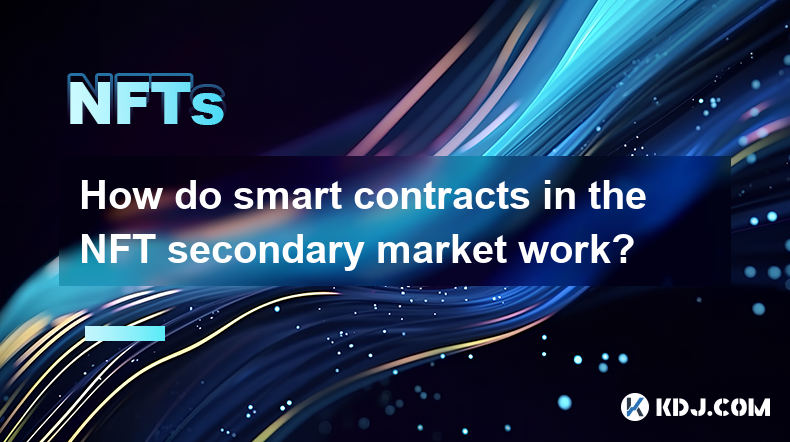
How do smart contracts in the NFT secondary market work?
Apr 03,2025 at 07:14am
Smart contracts play a pivotal role in the NFT secondary market, facilitating seamless transactions and enforcing predefined rules. These self-executing contracts with the terms of the agreement directly written into code are stored on the blockchain. In the context of NFTs, smart contracts automate the buying, selling, and transferring of digital asset...
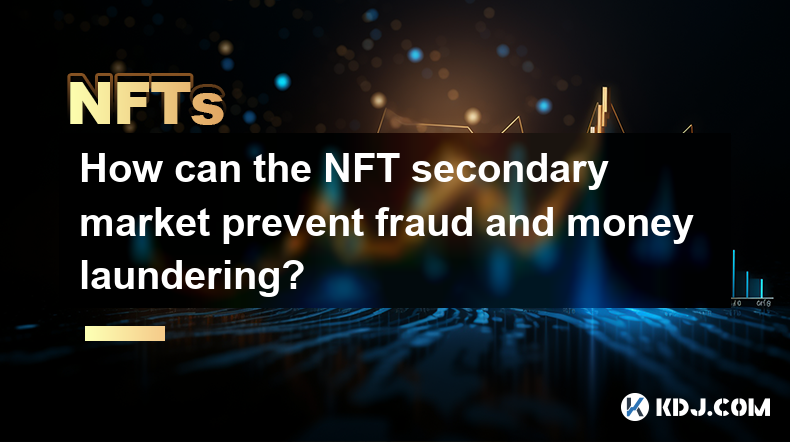
How can the NFT secondary market prevent fraud and money laundering?
Apr 03,2025 at 08:35am
The NFT secondary market has become a thriving hub for digital art and collectibles, but it also faces challenges in preventing fraud and money laundering. To tackle these issues, the market can implement various strategies and technologies to ensure a safer and more transparent trading environment. This article will explore how the NFT secondary market...

How are transaction fees in the NFT secondary market calculated?
Apr 04,2025 at 05:28am
The calculation of transaction fees in the NFT secondary market is a crucial aspect that both buyers and sellers need to understand. These fees can significantly impact the overall cost of transactions and the profits that sellers can make. In this article, we will delve into the various components that make up these fees, how they are calculated, and w...

Why are the prices in the NFT secondary market fluctuating so dramatically?
Apr 03,2025 at 10:35pm
The NFT secondary market has been experiencing dramatic price fluctuations, leaving many in the cryptocurrency community puzzled and curious. To understand this phenomenon, it's essential to delve into the factors driving these price movements. From the impact of market sentiment and celebrity endorsements to the role of speculation and the unique natur...
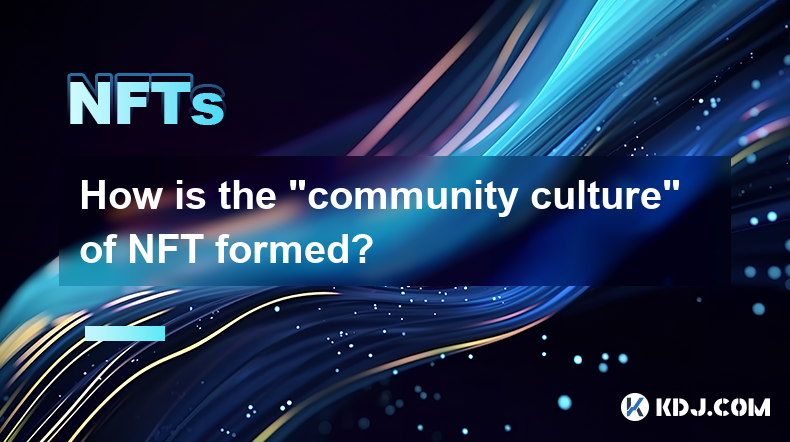
How is the “community culture” of NFT formed?
Apr 03,2025 at 11:07am
The formation of the 'community culture' within the NFT (Non-Fungible Token) space is a fascinating and multi-faceted process. It involves various elements such as shared interests, active engagement, and the creation of a sense of belonging among members. NFT communities often revolve around specific projects or artists, fostering a unique environment ...
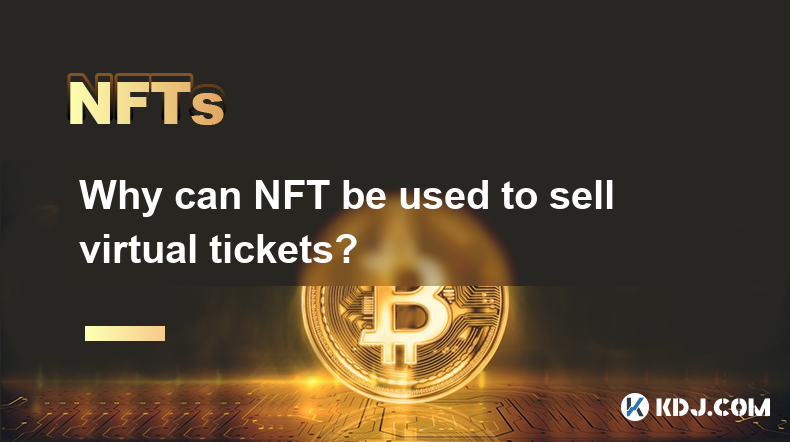
Why can NFT be used to sell virtual tickets?
Apr 03,2025 at 01:35pm
NFTs, or Non-Fungible Tokens, have revolutionized the way we think about digital ownership and value, particularly in the realm of virtual tickets. The primary reason NFTs can be used to sell virtual tickets is their unique nature. Unlike cryptocurrencies such as Bitcoin or Ethereum, which are fungible and can be exchanged on a one-to-one basis, NFTs ar...

How do smart contracts in the NFT secondary market work?
Apr 03,2025 at 07:14am
Smart contracts play a pivotal role in the NFT secondary market, facilitating seamless transactions and enforcing predefined rules. These self-executing contracts with the terms of the agreement directly written into code are stored on the blockchain. In the context of NFTs, smart contracts automate the buying, selling, and transferring of digital asset...

How can the NFT secondary market prevent fraud and money laundering?
Apr 03,2025 at 08:35am
The NFT secondary market has become a thriving hub for digital art and collectibles, but it also faces challenges in preventing fraud and money laundering. To tackle these issues, the market can implement various strategies and technologies to ensure a safer and more transparent trading environment. This article will explore how the NFT secondary market...

How are transaction fees in the NFT secondary market calculated?
Apr 04,2025 at 05:28am
The calculation of transaction fees in the NFT secondary market is a crucial aspect that both buyers and sellers need to understand. These fees can significantly impact the overall cost of transactions and the profits that sellers can make. In this article, we will delve into the various components that make up these fees, how they are calculated, and w...

Why are the prices in the NFT secondary market fluctuating so dramatically?
Apr 03,2025 at 10:35pm
The NFT secondary market has been experiencing dramatic price fluctuations, leaving many in the cryptocurrency community puzzled and curious. To understand this phenomenon, it's essential to delve into the factors driving these price movements. From the impact of market sentiment and celebrity endorsements to the role of speculation and the unique natur...

How is the “community culture” of NFT formed?
Apr 03,2025 at 11:07am
The formation of the 'community culture' within the NFT (Non-Fungible Token) space is a fascinating and multi-faceted process. It involves various elements such as shared interests, active engagement, and the creation of a sense of belonging among members. NFT communities often revolve around specific projects or artists, fostering a unique environment ...

Why can NFT be used to sell virtual tickets?
Apr 03,2025 at 01:35pm
NFTs, or Non-Fungible Tokens, have revolutionized the way we think about digital ownership and value, particularly in the realm of virtual tickets. The primary reason NFTs can be used to sell virtual tickets is their unique nature. Unlike cryptocurrencies such as Bitcoin or Ethereum, which are fungible and can be exchanged on a one-to-one basis, NFTs ar...
See all articles




















































































